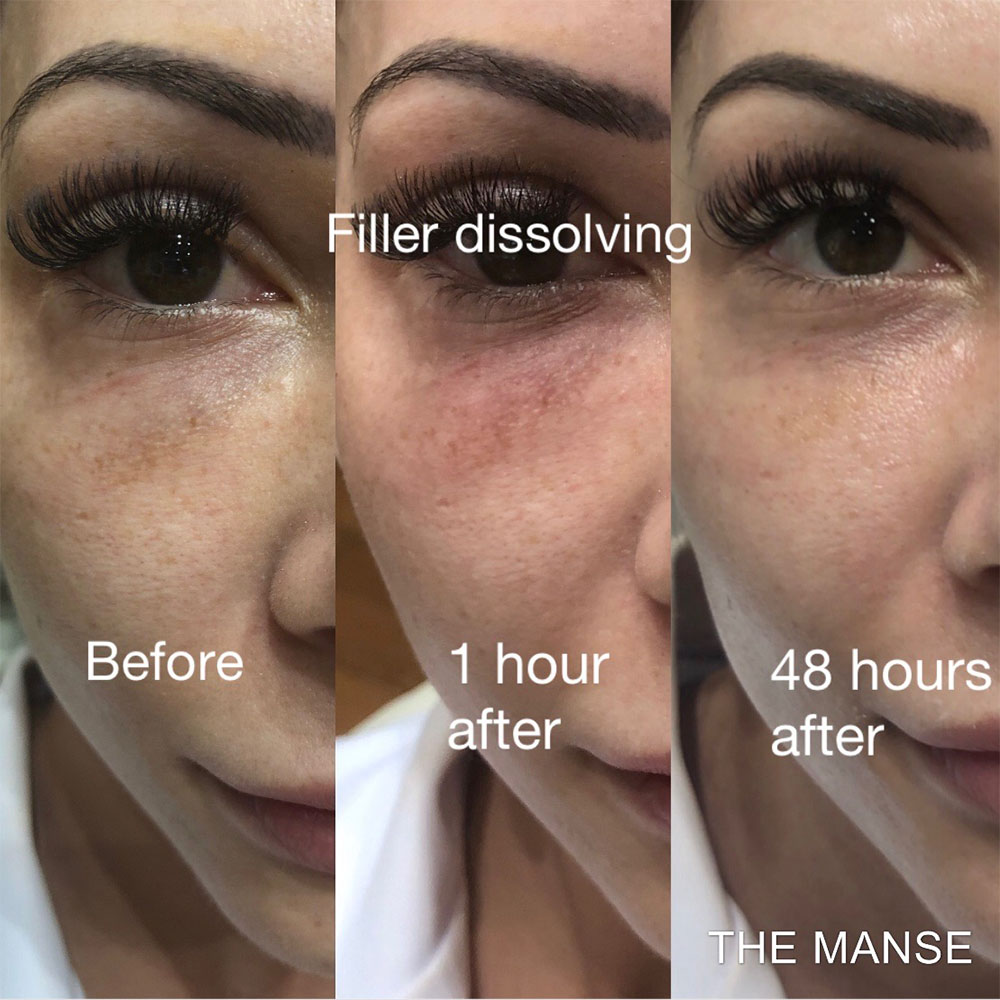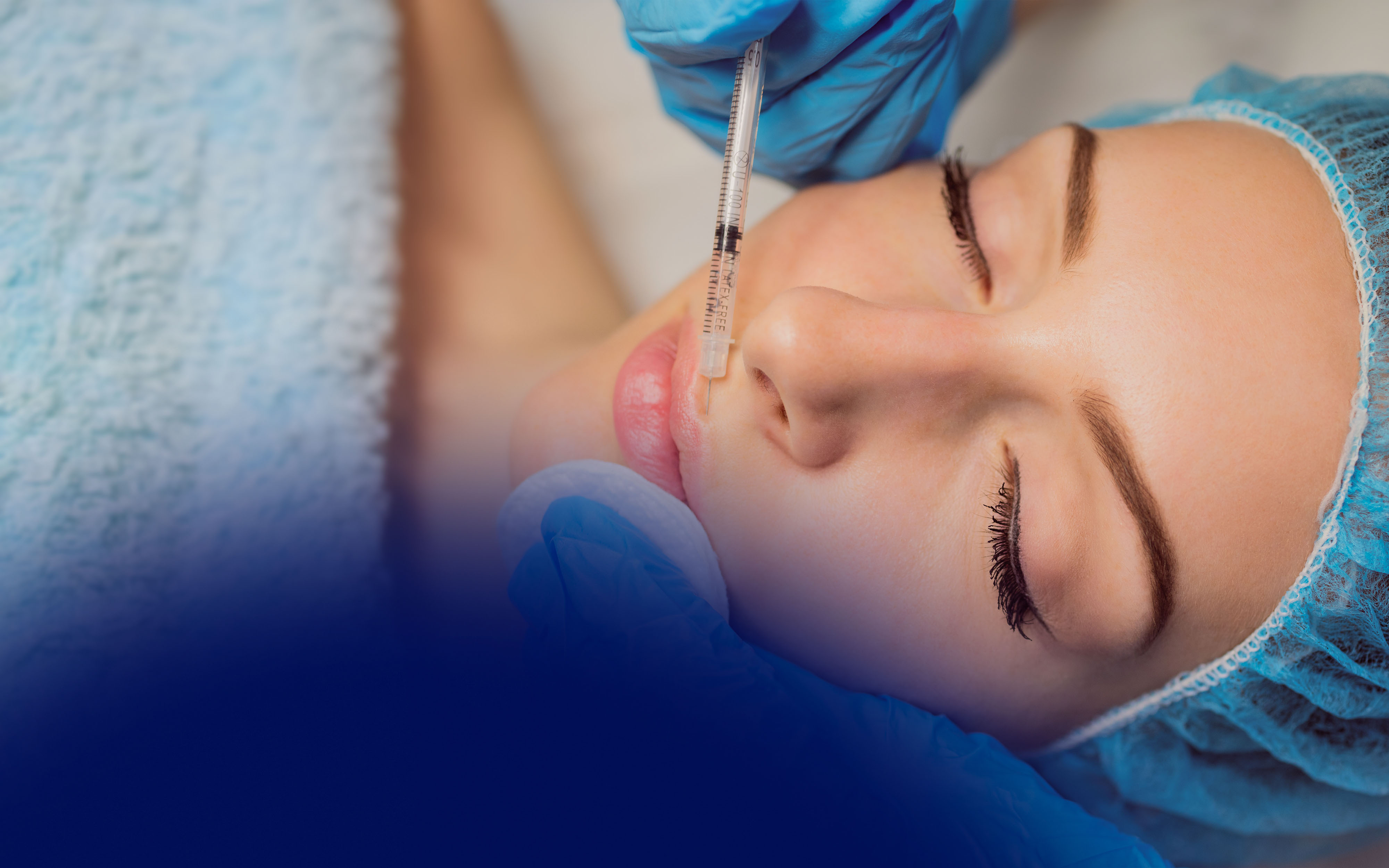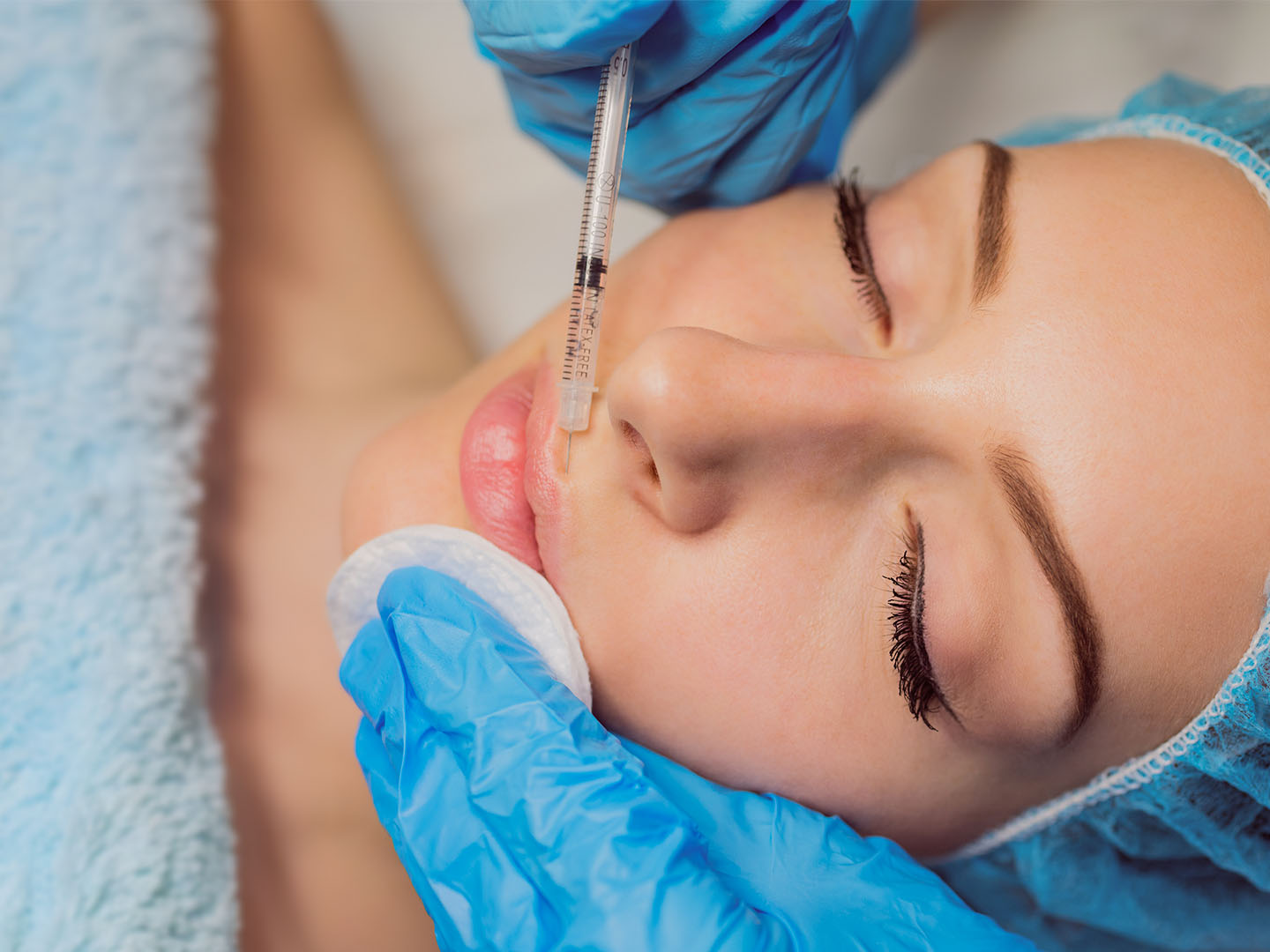
Dissolving fillers has become an integral part of aesthetic medicine, giving practitioners and patients the reassurance that results can be reversed or adjusted if necessary. While dermal fillers are widely used for rejuvenation, contouring, and enhancement, complications such as migration, asymmetry, or overfilling can occur. In other cases, patients may simply want to return to a more natural look.
Before-and-after dissolving filler images often circulate on social media, but these transformations need to be understood through a clinical lens. For professionals, the focus is not just on aesthetics but also on patient safety, expectation management, and the long-term impact on tissue health.
Key Takeaways
- Dissolving filler is commonly performed for aesthetic corrections and safety emergencies.
- Patient expectations often differ from clinical reality; managing this gap is vital.
- Outcomes depend on filler type, location, duration, and injector technique.
- Hyaluronidase treatment is generally safe, but informed consent and risk management are essential.
- Documenting realistic before-and-after transformations builds patient trust and confidence.
Why Dissolving Filler Matters?
Dissolving filler is not only a cosmetic correction but also a vital safety intervention. Patients often request hyaluronidase treatment due to overfilling, asymmetry, migration, or dissatisfaction with results. In elective cases, dissolving restores harmony and balance when outcomes fail to match patient goals.
In emergencies, such as vascular occlusion, dissolving filler becomes lifesaving. Immediate administration of hyaluronidase can restore blood flow and prevent tissue necrosis. While aesthetics often motivate elective dissolutions, patient safety must always remain the top priority.

Dissolving Filler Before and After: What Patients Expect vs. Reality
Patients often arrive with the belief that dissolving filler before and after results will deliver an instant return to their natural appearance. They may imagine flawless outcomes with zero downtime. Managing filler removal patient expectations is crucial, since outcomes may include swelling, bruising, or temporary unevenness.
The process works quickly. Hyaluronidase begins breaking down filler within hours, but tissues need time to recover. Normalization may take several days to weeks, depending on the filler type, area treated, and individual healing response. Setting clear expectations about this timeline helps reduce patient anxiety and dissatisfaction.

Dissolve Filler - Typical Before and After Outcomes
Before-and-after comparisons provide a visual framework for setting expectations, assessing treatment success, and guiding future care. Elective dissolving focuses on restoring balance and correcting aesthetic concerns, while emergency dissolving prioritizes tissue health and safety. Documenting both perspectives ensures patients see the full scope of what can realistically be achieved.
Before Dissolving Filler
Before undergoing dissolving procedures, patients may present with overfilled features, asymmetry, or filler migration that creates unnatural results. Common complaints include puffiness under the eyes, distorted lip shape, or heaviness in the midface. In particular, lip filler dissolving before and after cases often illustrate how migration or ‘duck lips’ can be successfully corrected.
In emergency scenarios, signs of vascular occlusion, pain, or skin changes may indicate the urgent need for treatment. Understanding these starting points is crucial for documenting cases and setting up realistic before-and-after comparisons.
After Dissolving Filler
Following treatment, elective cases often show improved facial balance, reduced puffiness, and restored natural contours. These improvements represent some of the most common hyaluronidase filler results seen in clinical practice. Lips typically regain softer proportions, while tear troughs may lose the swollen or tired appearance caused by misplaced filler.
In urgent cases, the “after” outcomes are centered on preserving tissue health. Aesthetic refinements may follow later, once perfusion is restored. In some cases, partial dissolving is preferred, leaving a degree of filler in place to maintain natural proportions while addressing the problem area. Photographic documentation of the after results is an essential part of expectation management.

Factors That Influence Results
Several clinical factors determine the success of filler dissolving. These should be carefully evaluated during treatment planning:
- Longevity of filler: Older, more integrated filler is harder to dissolve compared to the recently injected product.
- Filler type and brand: The degree of crosslinking affects how resistant the filler is to breakdown, with denser fillers requiring higher or repeated doses.
- Anatomical area treated: Tear troughs, lips, and perioral regions each respond differently, and results vary by tissue density and mobility.
- Injector’s technique: Precision, depth of injection, and dosing directly influence how well the filler dissolves and how natural the outcome looks.
- Patient biology: Individual healing capacity, metabolism, and natural hyaluronic acid replenishment impact recovery speed and final appearance.
Short-Term Side Effects After Dissolving
Like any injectable procedure, hyaluronidase treatment carries short-term side effects. Common side effects include:
- Swelling and redness: Localized inflammation is common immediately after injections.
- Tenderness or discomfort: Patients may feel soreness at the treated sites for a few days.
- Bruising: Small blood vessels may be disrupted, leading to bruising that can last several days.
- Temporary volume loss: Patients may notice a “deflated” look as both filler and some natural HA are broken down.
- Emotional impact: The sudden change in appearance can feel dramatic, and patients may need reassurance that this phase is temporary.
What Is Post-hyluronidase Syndrome?
Post-hyaluronidase syndrome is a clinically significant phenomenon that can occasionally follow filler dissolving. It is characterized by changes such as facial hollowing, loss of skin elasticity, and textural irregularities that sometimes make patients appear more depleted than they did before treatment. In most cases, the effects are temporary, resolving as natural hyaluronic acid levels recover.
A large retrospective study found this occurred in around 18% of patients, particularly in areas with thin soft tissue, like the tear troughs. Importantly, the likelihood of developing the syndrome was linked more to the amount of filler removed and the duration the filler had been in place. Management of post-hyaluronidase syndrome requires a combination of expectation setting and clinical strategy.
Long-Term Outcomes and Retreatment
Fortunately, hyaluronidase does not negatively impact long-term skin quality. Once tissues stabilize, they return to their natural state without damage. The body naturally replenishes hyaluronic acid, gradually restoring hydration and elasticity.
Most patients are suitable candidates for refilling within 1-2 weeks, once the area has healed. Successful retreatment requires careful planning and prioritization of balance over volume. Long-term outcomes are most satisfying when guided by clear patient goals and meticulous injector technique.

Safety Considerations When Dissolving Filler
Safety should always remain the cornerstone of filler dissolving treatments. Practitioners must not only understand how to use hyaluronidase effectively but also anticipate risks and prepare for rare adverse events.
The following points summarize key safety considerations:
- Screen for contraindications: Avoid treatment in patients with known allergies to hyaluronidase, bee venom, or certain autoimmune conditions.
- Consider patch testing: High-risk patients may benefit from small-dose testing before full treatment.
- Be prepared for allergic reactions: Although rare, practitioners should always be ready to manage anaphylaxis and keep emergency medications available.
- Emergency protocols: For vascular occlusions, immediate and aggressive hyaluronidase administration is essential to save tissue.
- Dose control: Use careful dosing and precise technique to avoid unnecessary tissue breakdown.
- Informed consent: Ensure patients fully understand potential risks, benefits, and the possibility of multiple sessions.
Best Practices for Practitioners
Effective filler dissolving requires both technical expertise and communication skills. Practitioners should obtain informed consent, clearly explaining both benefits and risks. Using before-and-after images helps patients visualize realistic outcomes and sets appropriate expectations.
Patients should also be encouraged to allow time between dissolving and refilling to let tissues stabilize. The best way practitioners can enhance their skill set is through ongoing professional development. Platforms like HubMed Ed provide dermal filler training and advanced aesthetic courses, ensuring practitioners remain current in evidence-based techniques.

Final Considerations
Dissolving filler before and after treatment can produce dramatic improvements, but results are rarely instantaneous perfection. Through realistic counseling, photographic documentation, and careful retreatment planning, injectors can deliver safe, natural, and satisfying results.
For practitioners looking to expand their expertise, explore aesthetic medical training at HubMed Ed. Access advanced case studies, training modules, and galleries that showcase real-world filler dissolutions to strengthen your clinical approach.
FAQ
How long does dissolving fillers take to heal?
Most patients recover within 1-2 weeks after dissolving the filler. Swelling and bruising usually resolve in a few days, but final tissue normalization may take longer.
Does skin sag after dissolving fillers?
Some patients may notice a temporary hollow or deflated look due to the removal of volume and breakdown of natural hyaluronic acid. This effect is typically short-lived as the skin gradually recovers elasticity and hydration.
Does hyaluronidase affect collagen?
Current evidence shows hyaluronidase targets hyaluronic acid and does not break down collagen. Collagen structure remains intact, and normal tissue support is preserved.
Can I wear makeup after dissolving fillers?
Patients are usually advised to avoid makeup for the first 24 hours after treatment to reduce the risk of infection or irritation. After this period, makeup can be worn as normal if the skin is healing well.
Which filler cannot be dissolved?
Hyaluronidase is effective only on fillers that are made with hyaluronic acid. Other products, including calcium hydroxylapatite (Radiesse) and poly-L-lactic acid (Sculptra), do not break down with this enzyme and must be addressed through alternative treatment methods.
References:
- Hong G, Hu H, Wan J, Chang K, Park Y, Vitale M, Damiani G, Yi KH. How should we use hyaluronidase for dissolving hyaluronic acid fillers? J Cosmet Dermatol. 2025;24(1):e16783. doi:10.1111/jocd.16783. https://onlinelibrary.wiley.com/doi/full/10.1111/jocd.16783
- Wilde CL, Jiang K, Lee S, Ezra DG. The posthyaluronidase syndrome: dosing strategies for hyaluronidase in the dissolving of facial filler and independent predictors of poor outcomes. Plast Reconstr Surg Glob Open. 2024;12(4):e5765. doi:10.1097/GOX.0000000000005765. PMID: 38655103; PMCID: PMC11037726. https://pmc.ncbi.nlm.nih.gov/articles/PMC11037726/
- Bravo BSF, Cavalcante TM, Silveira C, Bravo LG, Zafra MC, Elias MC. Resolve and dissolve—an ultrasound-guided investigation on the effects of hyaluronidase on different soft tissue fillers. J Cosmet Dermatol. 2024;23(10):3173-3181. doi:10.1111/jocd.16393. https://onlinelibrary.wiley.com/doi/10.1111/jocd.16393
Disclaimer:
This article is intended for licensed medical professionals. All protocols, dosages, and treatment insights referenced herein are based on published literature. The content is not intended to encourage application, diagnosis, or self-treatment of unlicensed individuals, and should not be used as a substitute for the clinical judgment of a qualified healthcare provider.

